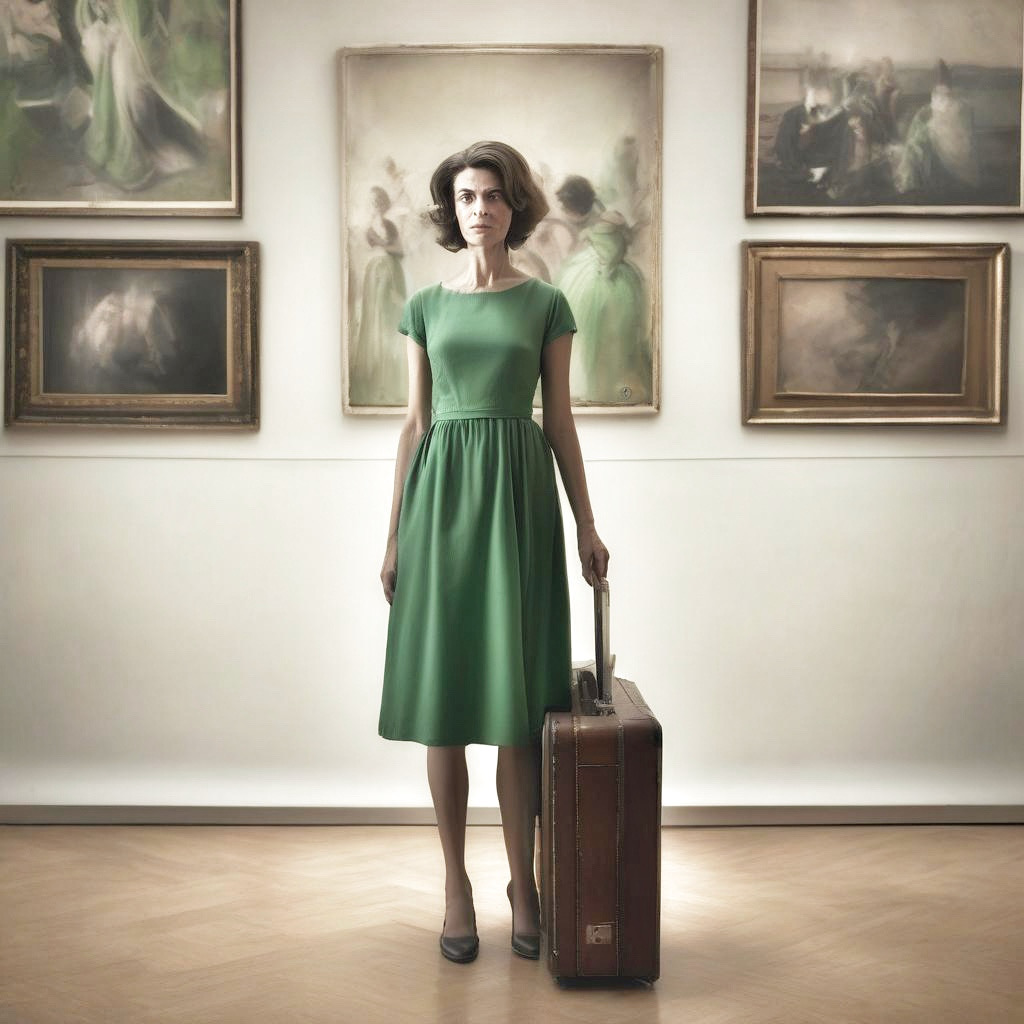
What do you see in this image? I’ll tell you what I see. I see:
A very thin woman
A woman in her late 30’s
An art gallery or museum
A woman standing in a museum or art gallery
A woman who has brought her suitcase into the museum
A woman wearing a green dress
A woman with a cinched waist dress
A woman wearing high heels
A woman looking uncomfortable, ill-at-ease
A white woman
A woman standing alone
A woman with a very long neck
A part of a wall with paintings that seem to match the woman’s dress
We can make more observations, I think.
The question that arises for me, every time I create a new character with AI is, Whose choices are these? To what extent is this image the result of my explicit instructions per the prompting and to what extent does AI have a mind of its own? Or, to what extent has AI come to learn my artistic preferences and is creating work that falls within those parameters?
To some extent, the work is my own. And with good prompting I am learning how to guide the AI in important ways. I know, for example, to prompt for decade since this is vital to the work I am doing about generations of Eastern European Jewish immigrants and their families over five generations. If I want 1911, I say so. If I want 1956, I say so.
I also know to prompt for gender because I am focussing on the women of the fiction Portensky family, formerly of Liuh (Russia) and now of NYC and Los Angeles.
I do not prompt for race. The AI appears to know that Eastern European Jewish should produce an image of a person with white skin.
I do not usually prompt for body type. Yet, as in the case of the woman above, Midjourney delivers a slim woman. In fact, all of the women I have created in this series are, without my asking for it in all but two cases where I prompted for ballet dancers, AI created very thin women.
I do not prompt for things like “looking lost” or “feeling isolated.” And somehow these women, especially the ones from the 1950s and early 60s come out with a noticeable level of remove. Distance.
Thin, aloof, white, alone, and holding a suitcase. What interests me tremendously at this point is, What is my collaborator — AI — telling me? Does the algorithm automatically assume that this is the female ideal? Or the female reality? That people like me, a late Baby Boomer from a Jewish suburb of Hartford, Connecticut, were born to mothers who held themselves in check and stood in galleries wondering what the world was like outside their avocado green kitchens?
It isn’t that this reality comes as a surprise. It’s that this reality as created by AI is a surprise. The history of women is very possibly (probably?) embedded in the very images that AI has trained on for the probable image to produce.
And THIS is something I must explore. First, to identify and then to disrupt.
Fascinating , which tool are you using. I was to create something for 30 years of freedom
I am using DALL-E — first DALL-E2 and, more recently, DALL-E 3. To be honest, I believe DALL-E 2 is a better choice, but they’re phasing it out. If you ever want to talk about it, i’d be delighted!
Yes! Identify and then disrupt. Poetry for women’s rights.
YES.